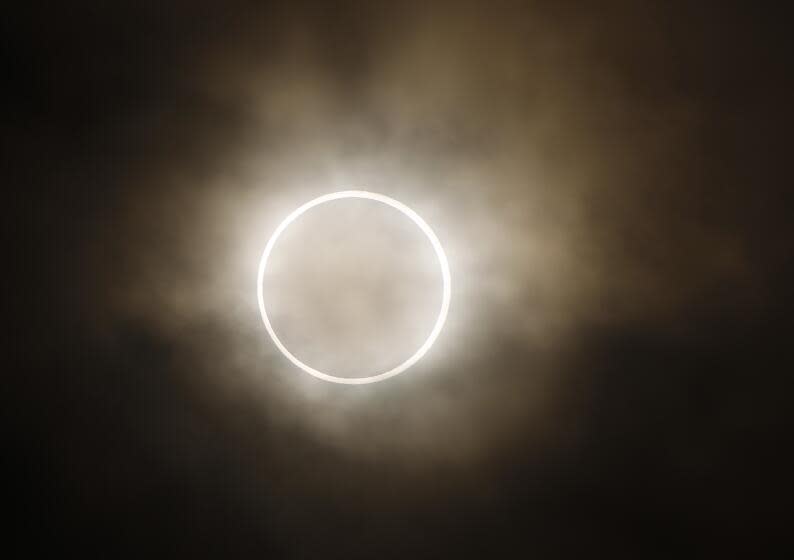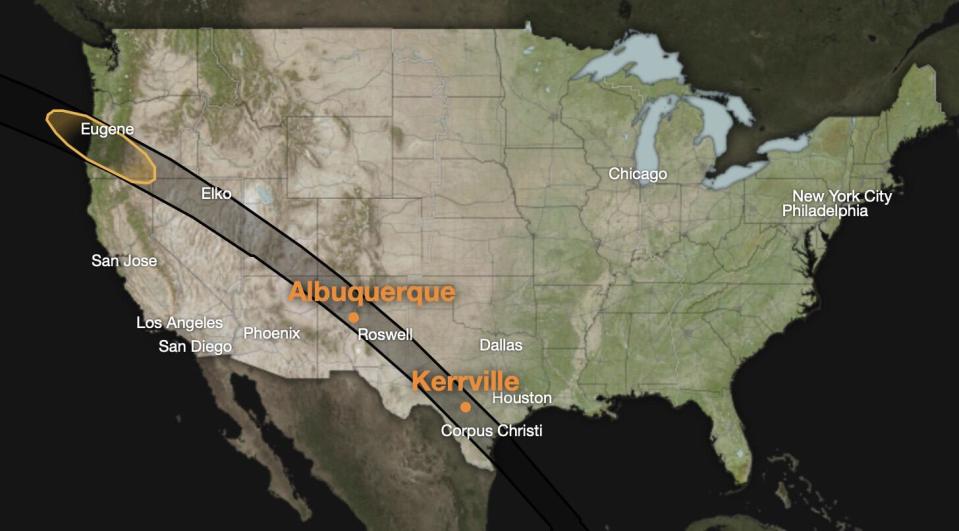'We're just a dot': Ring of fire eclipse draws crowds to California town for deeper perspective, pancakes

During Saturday's solar eclipse, only those present within a narrow strip of the country will be able to see the annularity, or ring of fire, when the moon sits almost perfectly centered on the sun with only a circle of light visible around it.
In California, the viewing area for the ring of fire includes only a tiny northeastern corner of the state near the Oregon and Nevada borders.
The portion includes rural Modoc County, where eclipse fever has stargazers booking rooms in the town of Alturas, population 2,715.
As of Wednesday, 19 of the 32 rooms at the Hotel Niles were occupied — with all of the hotel's rooms reserved for this weekend — said Dakota Turcotte, a hotel receptionist.
Reservations for the eclipse began flooding in last week, Turcotte said.

"It's definitely the slower part of the year," Turcotte said. "We're absolutely ecstatic to have an influx of people that are passing through."
"It's going to be pretty busy," said Terry Olson, manager of the Hacienda Hotel, whose 20 rooms are fully booked.
The town and nearby Modoc National Forest are getting into the spirit of the eclipse, with an entire day planned around it.
Read more: California grants protection for rare cliff-dwelling daisy amid outcry over mining operation
The Rotary Club of Alturas will hold a pancake breakfast before the eclipse starts, and the Alturas Lions Club will host a post-eclipse barbecue.
Turcotte said that among those coming to town were "quite a few families."
The times are so chaotic, Olson said, that people just want to experience something real. The event could help put things in perspective, he said: "We're just a dot in the whole universe."
Although people in Los Angeles won't get to experience the full ring-of-fire effect, they will still see — weather permitting — the moon eclipse about 70% of the sun.
The eclipse will begin at 8:07 a.m., with the highest amount of sun coverage occurring at 9:24 a.m.
NASA warns those hoping to view the eclipse to do so safely and only through eyewear with ISO 12312-2 compliant filters, which can be purchased online at retailers such as Walmart.
Saturday's event will be the last annular eclipse visible from the United States, except for Alaska, until June 2039.
A total solar eclipse, however, is due to be visible in the States in April 2024.
This story originally appeared in Los Angeles Times.

